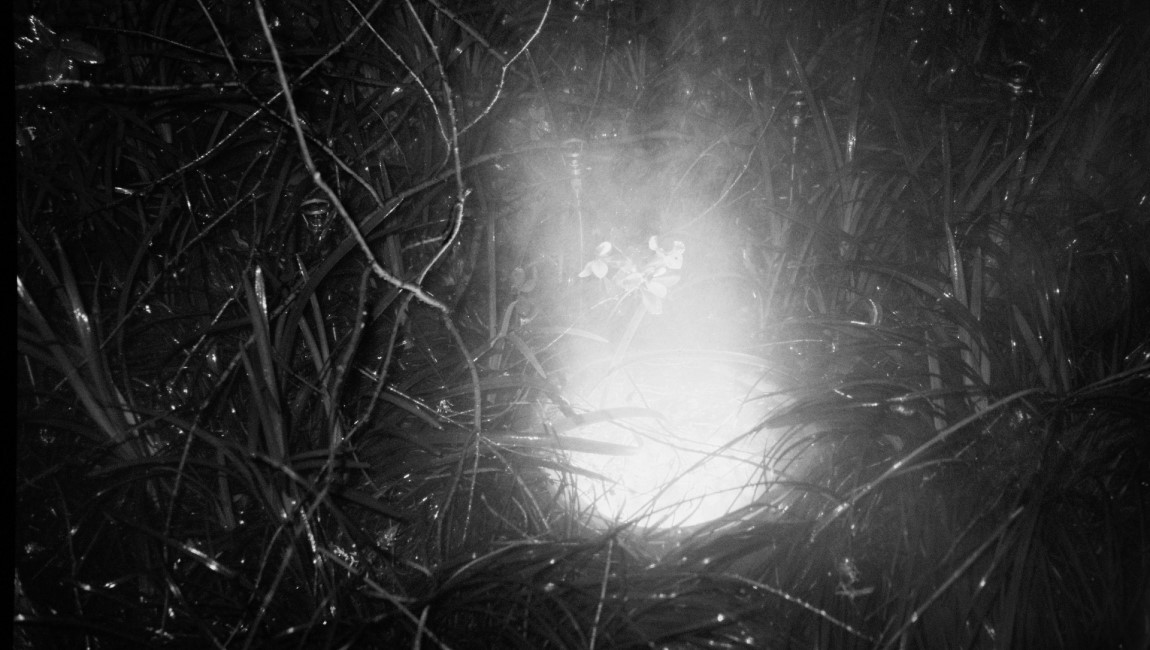In many respects, Jet Lag feels like a recognizable follow-up to Chinese director Zheng Lu Xinyuan’s Tiger Award-winning The Cloud in Her Room. There’s black-and-white photography and time jumps, languid pacing, and a fabulous shot that centers on pubic hair. But beyond such superficialities, this is a film that’s far more confident in its slipperiness, willing to let loose ends remain as is. This quality is evident from the get-go: Zheng Lu discusses the film — the screen entirely pitch black — and it’s noted that there’s a lack of a “main character,” a move that’s pinned to Zheng Lu’s reluctance to take on a lead role. Jet Lag’s simultaneously convergent and divergent narratives ensure this wisely remains the case.
There’s far more going on in Jet Lag than its intimate documentarian mode suggests. Part of the film documents the director and her girlfriend Zoe in Austria in 2020, the two forced to stay abroad due to a Covid lockdown. Footage also dates from a couple years earlier, when the family attended a distant relative’s wedding in Myanmar and used the opportunity to learn more about their expat patriarch, Zheng Lu’s great-grandfather. Then there are moments closer to the present, when Zheng Lu and her girlfriend are back in China. These moments lead us once again to Myanmar, but now with a focus on its ongoing political turmoil. Jet Lag has these varying narratives but the overall feelings and ideas are befitting the film’s title: one’s identity — individually and corporately — is always in flux, and there’s discomfort and revelation found in being out of sync with both time and place.
Jet Lag utilizes different film textures and modes as a way to bolster overlapping moods. There are screen captures of Google Maps and cracked phone screens, both serving as tools for learning more about Myanmar. This distancing, borne from satellite imagery’s artificiality and obfuscated digital text, makes this desire for connection all the more palpable. Even more affecting are the still photographs that define the beginning of the film, which is something one recalls when we see a photo of Zheng Lu’s great-grandfather much later on. On his portrait is a date, and it becomes a source of confusion — is this when he died, or is this when the photo was taken? Images are understood as insufficient time capsules — they can only reveal so much.
Most of Jet Lag is shot on a Sony DV camera, and its murky footage houses the most riveting images. They are slow-revealing paradoxes: sensual and banal, hypnotic and quotidian. In the middle of the film, Zheng Lu flips her camera upside down while on the road, and the result is both more disorienting and freeing than expected, as if its own kind of relief from the confusions defining the film. At one point, we watch as a simple exercise — raising a leg while lying down on one’s side — leads to momentary blockage of the sun, the change in light feeling like a necessary reminder of one being alive. At others, nude bodies are channels of both love and boredom. Such enigmatic images are spiritually linked to the most poignant passages in the film: English-language classes where friends share about their lives. Here, through the act of speaking in something other than their first language, these people are comfortable with revealing highly personal stories. It’s this excuse to learn that’s key. We don’t ever learn too much about Zheng Lu’s great-grandfather, and indeed her cousin notes that never having met him in person means it’ll stay that way. But Jet Lag, in its curiosity-driven filmmaking, understands that it’s only through life’s mysteries that we are driven to learn more about ourselves.
Published as part of Berlin Film Festival 2022 — Dispatch 2.







